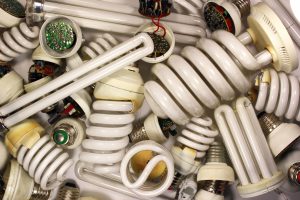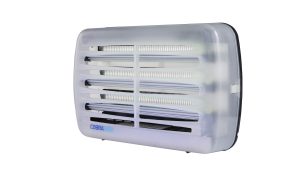In 1552, the first Czar of Russia, popularly nicknamed Ivan the Terrible, supposedly announced a morbid prize for anyone that devised a way to get rid of “devils of the air”. He was referring to flies. Unfortunately for the Czar, none of his subjects would succeed, nor would anyone for the next 379 years.
THE ORIGIN

You are probably familiar with this picture if you’ve watched a movie that depicts mythology or ancient kingdoms. For the longest time, you probably believed the person in the image was a fan bearer. While that is true on certain occasions, it turns out the “fan” in this picture is a horsetail staff, to drive away annoying flies.
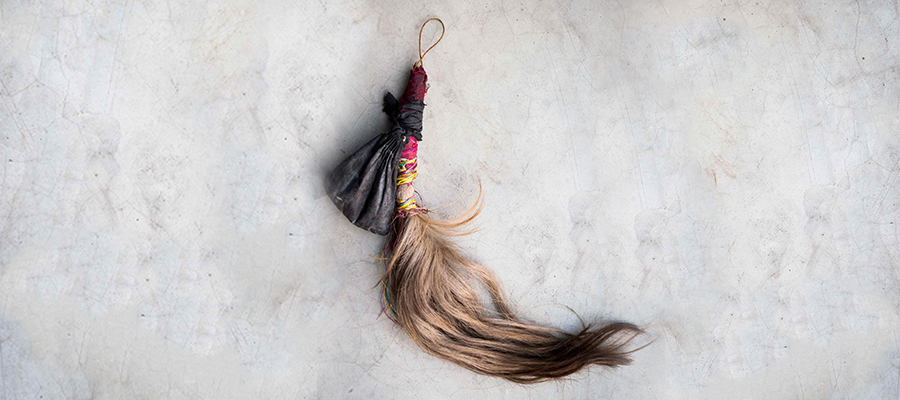
This is probably the first recorded example of fly control.
THE HISTORY

We can trace back the first patented commercial sale of fly killers to 1900. Robert R. Montgomery, the inventor, called it a fly-killer. It was later renamed “fly-swatter” by Samuel Crumbine, Secretary of the Kansas Board of Health at the time.
THE EVOLUTION
The inception of fly swatter paved the way for numerous domestic and eventually commercial fly control devices.
1. Fly Gun
The fly gun took off right after the fly swatter. It is a simple mechanic projectile fly killer.
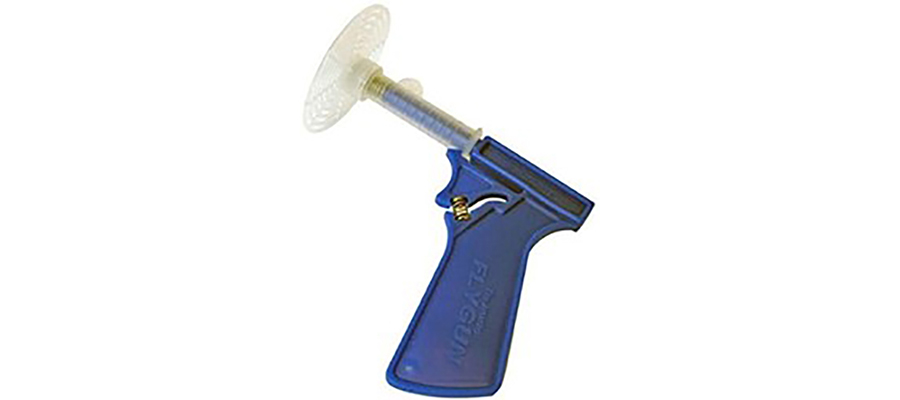
Source: amazon.co.uk/Fly-Gun-Colour-Vary-Blue/dp/B001158V04
2. Fly Bottle
The fly bottle or glass fly trap was first seen around the mid-1800s. It was an onion-shaped, handblown glass with a narrow top. It was filled with sugary liquid to attract flies and wasps. In other parts of the world, meat was used as bait. The positive phototaxis of the flies makes it harder to leave through the narrow, darkened opening of the trap.

3. Agricultural Fly Bottle
The fly bottles evolved for large-scale use on agricultural farms in the 1930s, where they were designed to be hung from trees.

Today they have been modified and manufactured using plastic, and are still widely in use.

4. Fly Paper
Flypapers are extremely sticky paper coated with sweet and fragrant substances to attract flies and a toxic substance that traps and kills them. The flypaper originated in the era of horse-drawn carts when flies were aplenty. They were handmade at local drugstores.
The flypaper, also called fly ribbon or fly strip, was easily accessible and disposable. They laid the foundation for glue boards as we know them.

5. Bug Zapper
In 1911, Popular Mechanics Magazine featured a piece that looks a lot like the modern-day bug zapper, and they called it the “fly trap”. Two anonymous men from Denver take credit for designing this electric zapper.

William Folmer and Harrison Chapin filed for the patent of the commercial ‘bug zapper’ in 1931. In 1934 the patent was granted, and the two men had made several improvements to their design. To this day, not much change has been made structurally to the electric insect zapper.
As industrialisation transformed civilisation, and awareness about the need for hygiene spread, the requirement for domestic fly controls reduced. Still, the need for robust, comprehensive fly control solutions would set a precedent for today’s USD 19.1 Billion global pest control market.
WHY FLY TRAPS ARE NECESSARY
Flies are a significant cause for nuisance with their constant buzzing, overhead flying, and ability to ruin a relaxing day. They are robust creatures that can survive temperatures from 10 to 45ºC ( 50 to 113ºF ). However, they thrive in areas with temperatures ranging from 20 to 23ºC (68 to 73ºF). This means that flies are found in most parts of the world.
Common houseflies can carry up to 100 different kinds of pathogens. It is estimated that a single house fly can carry up to 1.9 million bacteria on its body and up to 33 million in its gut. Some of these pathogens cause diseases like dysentery, salmonella, diarrhoea, and polio in human beings.

Flies lay their eggs in organic matter such as wet food waste, manure, meat, and vegetables. An adult female house fly is capable of laying 650 eggs in her 2-week life span. Common breeding grounds for flies include food preparation areas, food warehouses, slaughterhouses, food processing plants, garbage dumps, uncovered drains, cattle ranches, and poultry farms.
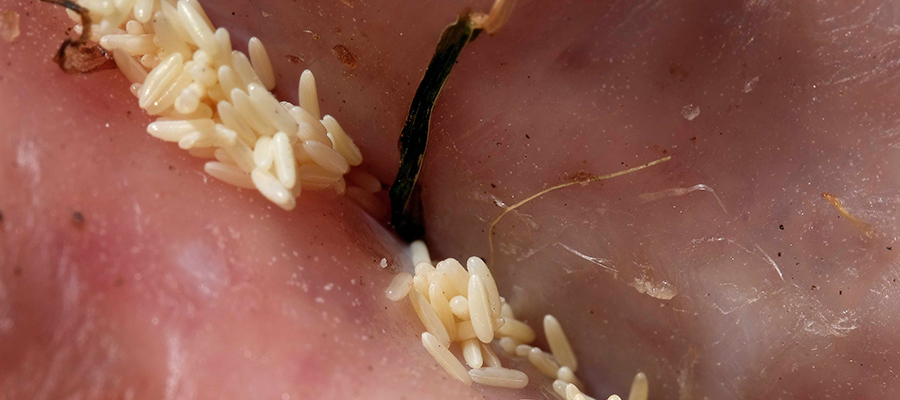
It is not difficult to see how fly population levels can rapidly spiral out of control if left unchecked. Failure to address and prevent fly contamination can adversely affect public health, sales, stock value and brand reputation. Therefore, billions of dollars are spent each year on food protection measures.

Flies are attracted to light, especially UVA light. Their compound eyes contain UV-sensitive photoreceptors, which have been hypothesised to trigger hardwired reflexes that draw them towards the light source. Studies have revealed the presence of a unique circuit in a fly’s brain specifically present to guide them toward UV light. Scientists and researchers have capitalised on this aspect of fly behaviour to develop insect light traps.
TYPES OF ELECTRIC LIGHT TRAPS
1. High Voltage Zappers
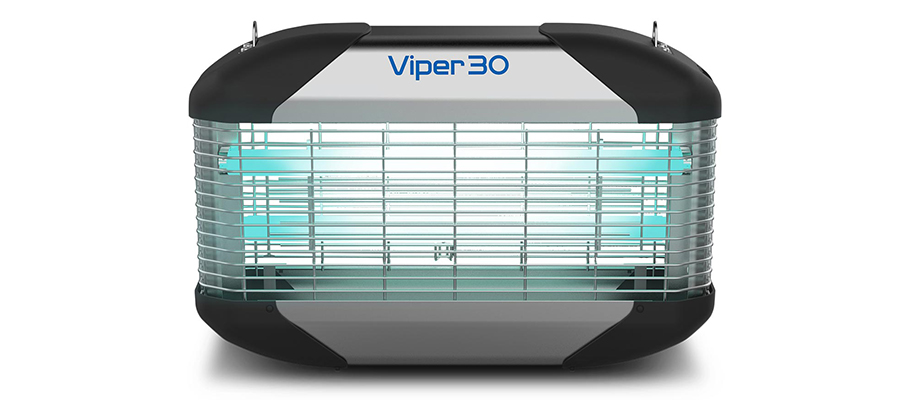
Zappers use UV light to attract flies to a high voltage grid, which electrocutes and disintegrates them on contact. This is usually accompanied by a zapping sound, giving these types of units their name. They are generally equipped with a catch tray to contain insect remains.
2. Glue Board Based Light Traps
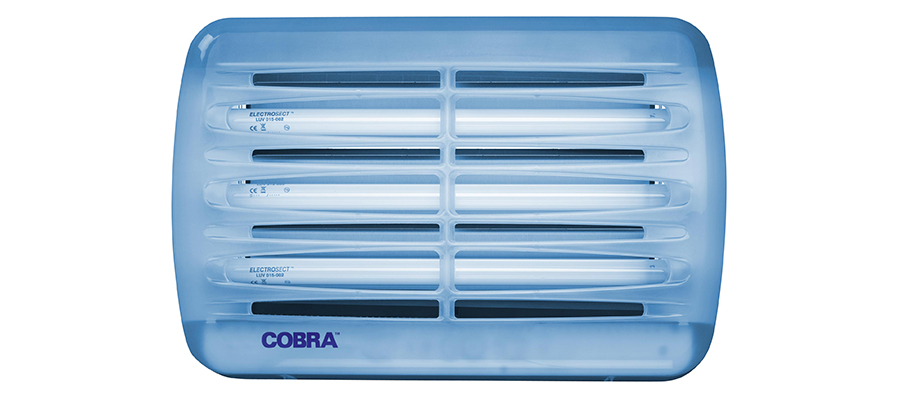
Unlike zappers, these traps attract flies to a glue board, where they are trapped. These units are much safer for use in food handling areas, as flies are trapped intact. Glue boards need replacement once a month or more, depending on the intensity of fly activity.
Additional features on the glue board like marked grids for identification and fly counting, clean-peel release paper, pheromone integrated glue formulation, and UV stabilised glue, as seen in Brandenburg’s Easy Count Universal Glue Board, allow for enhanced performance and improved monitoring of fly activity.

AREAS OF APPLICATION
Each year billions of dollars are spent on food protection measures. Although scientific and technological advancements have greatly improved the efficiency of fly traps, maintaining a pest-free and sanitary environment remains one of the most significant challenges facing the food and health industry.
To keep fly populations under control, limiting the places where they can breed is critical. Consistent sanitation practices and suitable fly traps go a long way in keeping fly activity at bay.
1. High Voltage Zappers
Studies have shown that the fly disintegrates into tiny fragments upon electrocution. The body parts can become airborne, landing up to 1.5 meters away from the trap.
For this reason, zapper units must NOT be used in and around food-handling areas. However, they are the perfect choice for loading docks, and garbage disposal areas where the risk of food contamination is minimal.

2. Glue Board Based Light Traps
UVA light-based glue boards trap flying insects fully intact. For this reason, glue boards are best suited for areas where food is handled, like kitchens, food processing units, and pantries.
Glue board traps are also ideal for front-of-house areas like supermarkets, hotel lobbies, and restaurant dining areas. However, flies and fly traps tend to be unattractive to customers and may not fit with the restaurant’s aesthetic appeal. Discreet fly traps that pose as ordinary light fixtures and blend in well with the ambience are the perfect choice in the areas mentioned above.
Brandenburg’s Genus® Illume Alpha is designed to look elegant and blend in seamlessly with any front-of-house decor. It enhances the overall ambience while improving food safety. It is available in black, white, brass or stainless steel finishing.
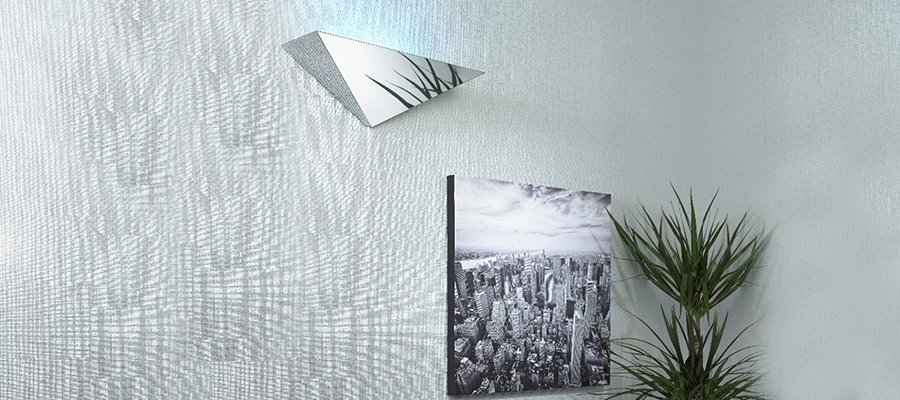
Similarly, the Genus® Eclipse Ultra can be customised with branded inserts to provide an additional brand touchpoint in your facilities. This allows for brand exposure while also delivering fast fly catch discreetly on its large glue board.

CONCLUSION
Maintaining food safety requires careful planning and strategy regarding fly trap placement and the types of fly traps used. Knowing which fly traps to use in each situation is essential to check the transmission of diseases and effectively monitor fly infestations.
Studies have found that flies in clean areas carry far fewer pathogens than those found in places with unsanitary conditions. Thus, the importance of maintaining proper sanitation for food safety should never be underestimated.
Truly effective fly control is an ongoing exercise that requires constant vigilance and a highly systematic approach. It combines preventive measures like proper food management, waste disposal, and hygiene using fly traps and insecticides. While a well-implemented preventative routine can reduce the pressure on remedial measures, it is essential to have all preventive measures in place.

We can’t control how efficiently you manage sanitation on your business premises, but we offer high-quality, sustainable fly traps that efficiently control the fly population. Brandenburg has created a name for itself in the food industry as the most sustainable and effective Insect Light Trap manufacturer.

